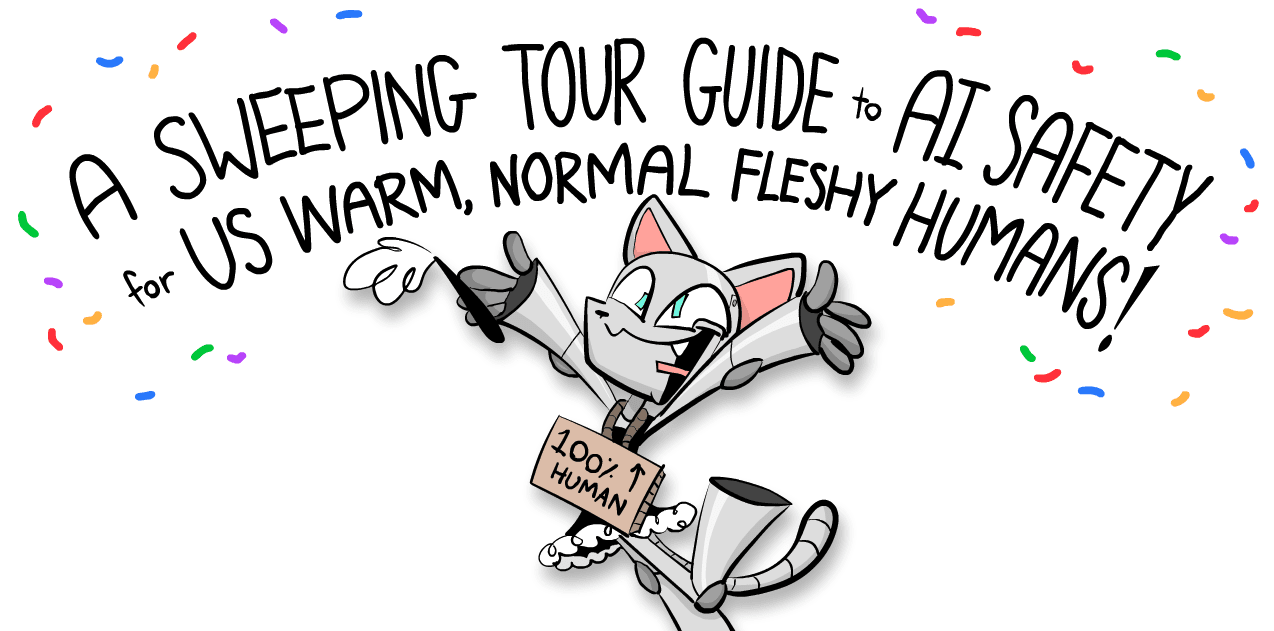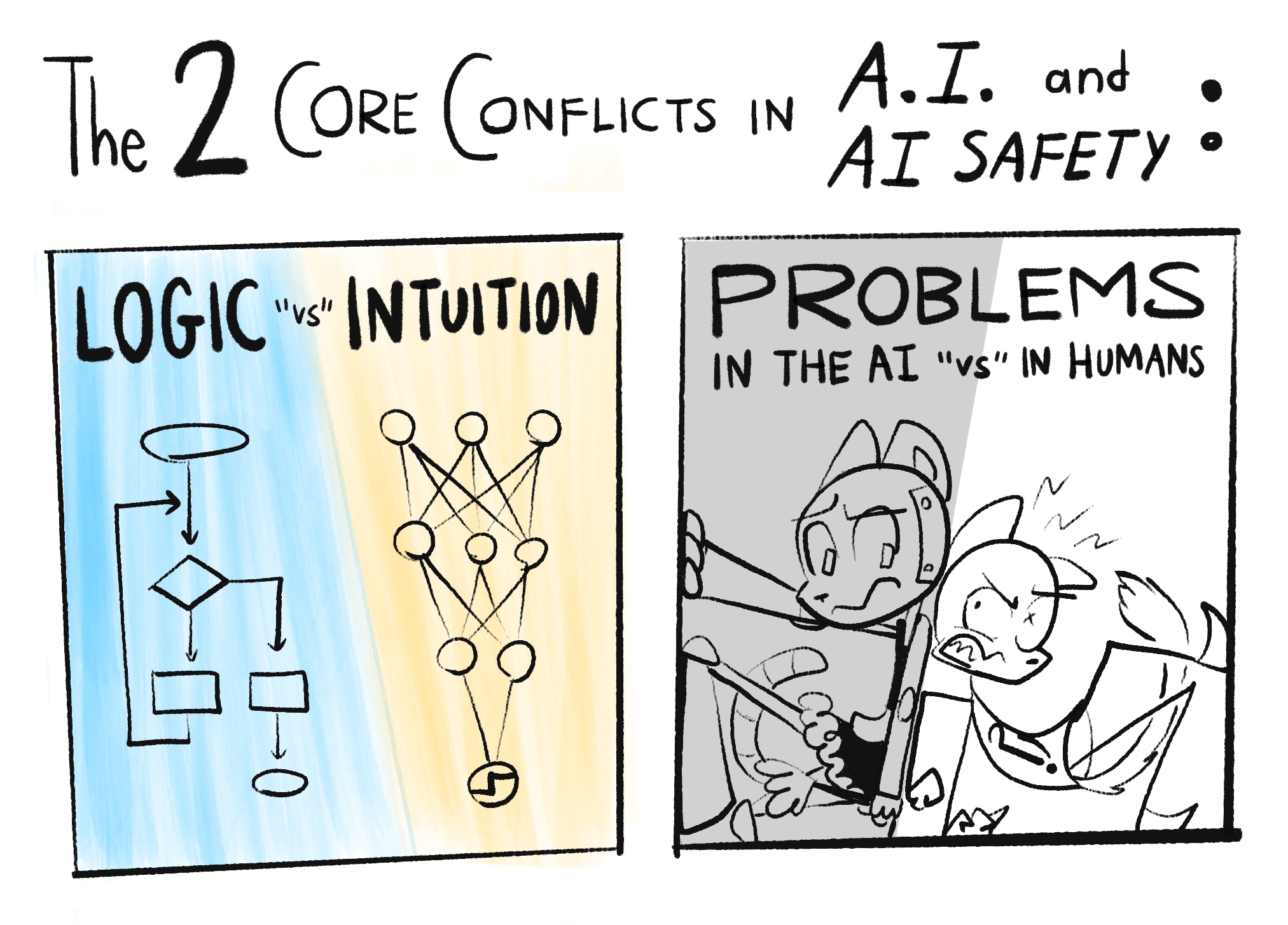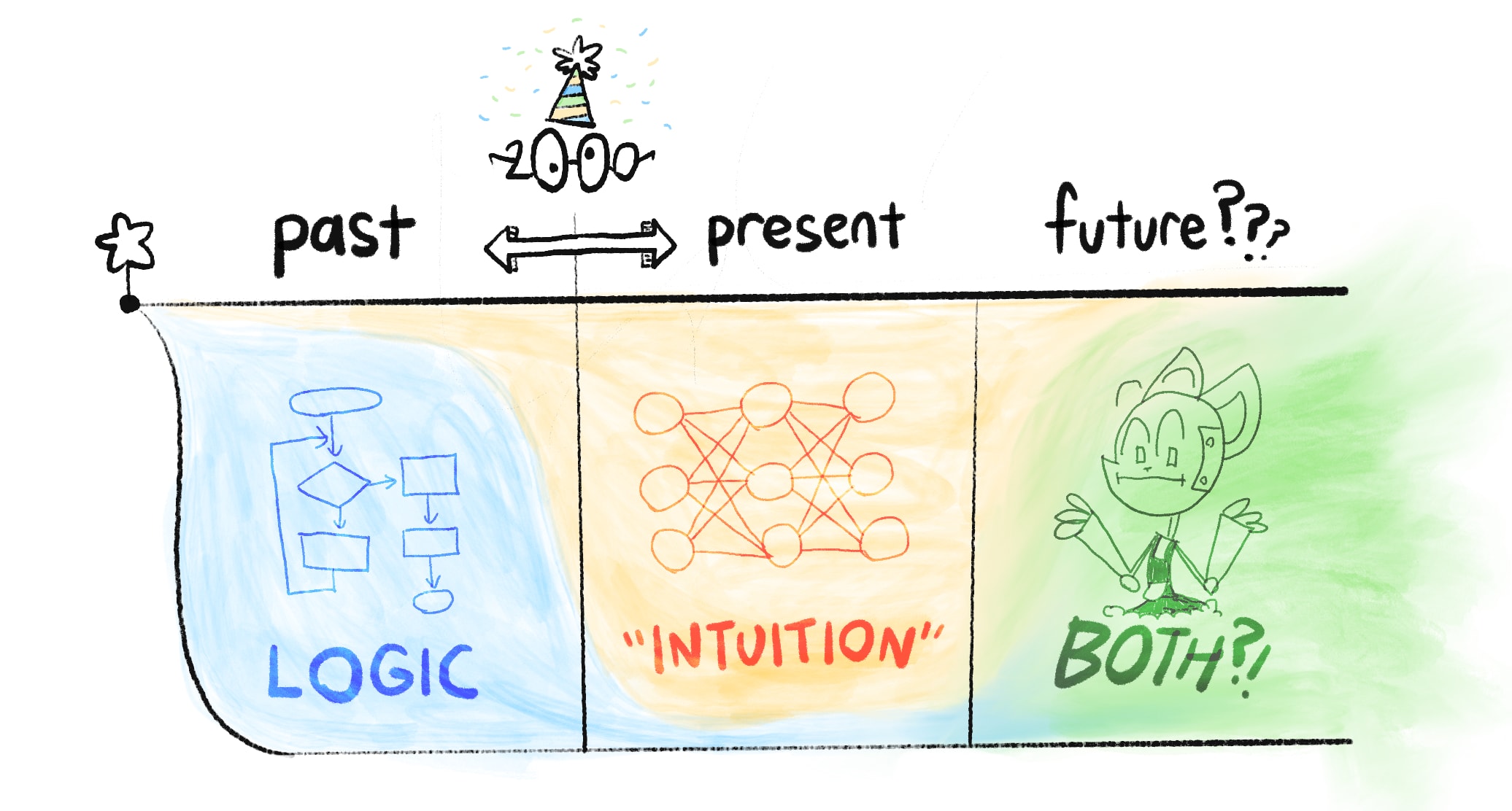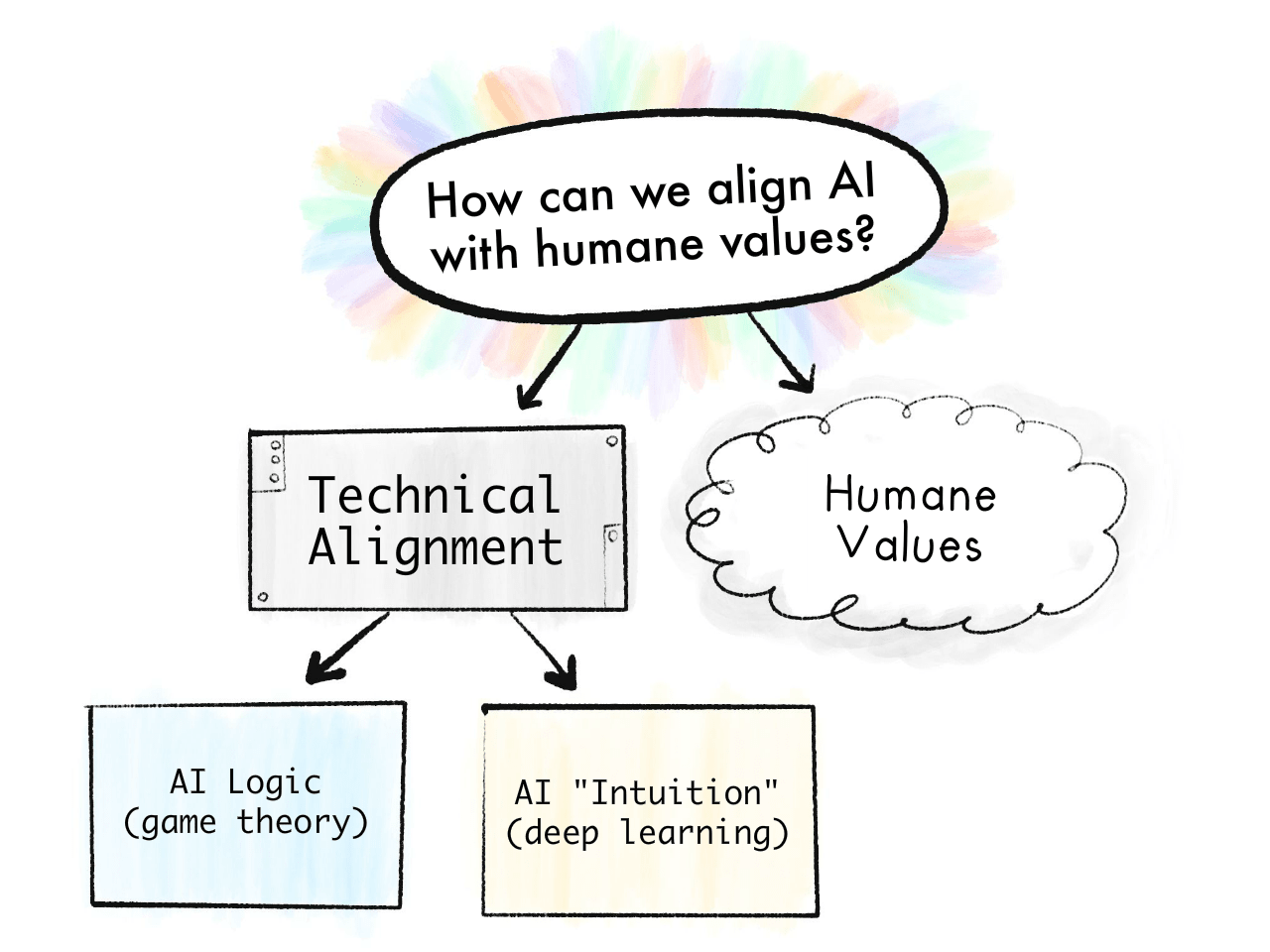Nicky Case, of "The Evolution of Trust" and "We Become What We Behold" fame (two quite popular online explainers/mini-games) has written an intro explainer to AI Safety! It looks pretty good to me, though just the first part is out, which isn't super in-depth. I particularly appreciate Nicky clearly thinking about the topic themselves, and I kind of like some of their "logic vs. intuition" frame, even though I think that aspect is less core to my model of how things will go. It's clear that a lot of love has gone into this, and I think having more intro-level explainers for AI-risk stuff is quite valuable.
===
The AI debate is actually 100 debates in a trenchcoat.
Will artificial intelligence (AI) help us cure all disease, and build a post-scarcity world full of flourishing lives? Or will AI help tyrants surveil and manipulate us further? Are the main risks of AI from accidents, abuse by bad actors, or a rogue AI itself becoming a bad actor? Is this all just hype? Why can AI imitate any artist's style in a minute, yet gets confused drawing more than 3 objects? Why is it hard to make AI robustly serve humane values, or robustly serve any goal? What if an AI learns to be more humane than us? What if an AI learns humanity's inhumanity, our prejudices and cruelty? Are we headed for utopia, dystopia, extinction, a fate worse than extinction, or — the most shocking outcome of all — nothing changes? Also: will an AI take my job?
...and many more questions.
Alas, to understand AI with nuance, we must understand lots of technical detail... but that detail is scattered across hundreds of articles, buried six-feet-deep in jargon.
So, I present to you:
This 3-part series is your one-stop-shop to understand the core ideas of AI & AI Safety* — explained in a friendly, accessible, and slightly opinionated way!
(* Related phrases: AI Risk, AI X-Risk, AI Alignment, AI Ethics, AI Not-Kill-Everyone-ism. There is no consensus on what these phrases do & don't mean, so I'm just using "AI Safety" as a catch-all.)
This series will also have comics starring a Robot Catboy Maid. Like so:
[...]
💡 The Core Ideas of AI & AI Safety
In my opinion, the main problems in AI and AI Safety come down to two core conflicts:
Note: What "Logic" and "Intuition" are will be explained more rigorously in Part One. For now: Logic is step-by-step cognition, like solving math problems. Intuition is all-at-once recognition, like seeing if a picture is of a cat. "Intuition and Logic" roughly map onto "System 1 and 2" from cognitive science.[1]1[2]2 (👈 hover over these footnotes! they expand!)
As you can tell by the "scare" "quotes" on "versus", these divisions ain't really so divided after all...
Here's how these conflicts repeat over this 3-part series:
Part 1: The past, present, and possible futures
Skipping over a lot of detail, the history of AI is a tale of Logic vs Intuition:
Before 2000: AI was all logic, no intuition.
This was why, in 1997, AI could beat the world champion at chess... yet no AIs could reliably recognize cats in pictures.[3]3
(Safety concern: Without intuition, AI can't understand common sense or humane values. Thus, AI might achieve goals in logically-correct but undesirable ways.)
After 2000: AI could do "intuition", but had very poor logic.
This is why generative AIs (as of current writing, May 2024) can dream up whole landscapes in any artist's style... yet gets confused drawing more than 3 objects. (👈 click this text! it also expands!)
(Safety concern: Without logic, we can't verify what's happening in an AI's "intuition". That intuition could be biased, subtly-but-dangerously wrong, or fail bizarrely in new scenarios.)
Current Day: We still don't know how to unify logic & intuition in AI.
But if/when we do, that would give us the biggest risks & rewards of AI: something that can logically out-plan us, and learn general intuition. That'd be an "AI Einstein"... or an "AI Oppenheimer".
Summed in a picture:
So that's "Logic vs Intuition". As for the other core conflict, "Problems in the AI vs The Humans", that's one of the big controversies in the field of AI Safety: are our main risks from advanced AI itself, or from humans misusing advanced AI?
(Why not both?)
Part 2: The problems
The problem of AI Safety is this:[4]4
The Value Alignment Problem:
“How can we make AI robustly serve humane values?”
NOTE: I wrote humane, with an "e", not just "human". A human may or may not be humane. I'm going to harp on this because both advocates & critics of AI Safety keep mixing up the two.[5]5[6]6
We can break this problem down by "Problems in Humans vs AI":
Humane Values:
“What are humane values, anyway?”
(a problem for philosophy & ethics)
The Technical Alignment Problem:
“How can we make AI robustly serve any intended goal at all?”
(a problem for computer scientists - surprisingly, still unsolved!)
The technical alignment problem, in turn, can be broken down by "Logic vs Intuition":
Problems with AI Logic:[7]7 ("game theory" problems)
- AIs may accomplish goals in logical but undesirable ways.
- Most goals logically lead to the same unsafe sub-goals: "don't let anyone stop me from accomplishing my goal", "maximize my ability & resources to optimize for that goal", etc.
Problems with AI Intuition:[8]8 ("deep learning" problems)
- An AI trained on human data could learn our prejudices.
- AI "intuition" isn't understandable or verifiable.
- AI "intuition" is fragile, and fails in new scenarios.
- AI "intuition" could partly fail, which may be worse: an AI with intact skills, but broken goals, would be an AI that skillfully acts towards corrupted goals.
(Again, what "logic" and "intuition" are will be more precisely explained later!)
Summed in a picture:






Part 2 is now available
https://aisafety.dance/p2/
Executive summary: This comprehensive guide explains the core ideas and debates in AI and AI safety, covering the history, present state, and possible futures of the field in an accessible way.
Key points:
This comment was auto-generated by the EA Forum Team. Feel free to point out issues with this summary by replying to the comment, and contact us if you have feedback.